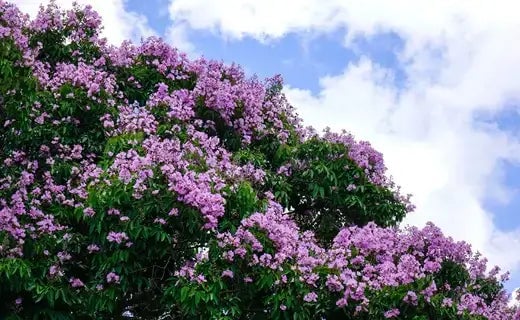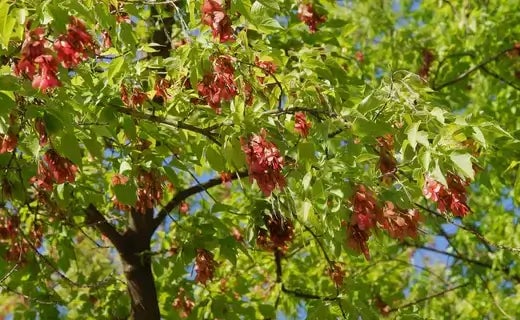Box elder trees, scientifically known as Acer negundo, are a remarkable species native to North America. They are often overlooked and underestimated due to their rapid growth and association with disturbed areas. However, box elders possess unique characteristics that make them invaluable in various ecological and economic contexts. This exploration delves into the fascinating world of box elder trees, discussing their adaptability to different soil types, resilience to harsh weather conditions, and significance in the timber industry.
Adapting to Diverse Soil Conditions
Box elder trees are renowned for their adaptability to various soil types. From fertile, well-draining soils to nutrient-poor, compacted substrates, these trees can establish themselves and thrive in multiple environments. This adaptability is partly attributed to their shallow, fibrous root system, which allows them to access water and nutrients efficiently, even in less-than-ideal soil conditions. Box elders often stand out as a suitable choice in regions with alkaline soils, which can be challenging for many tree species. Their ability to tolerate high pH levels and saline soils makes them a valuable addition to landscapes where other tree species might struggle to survive. This adaptability to diverse soil conditions contributes to their ecological significance, as they can help stabilize soil and avert erosion in areas prone to degradation.
Drought and Cold Resistance
One of the most impressive features of box elder trees is their remarkable resilience to drought and cold temperatures. These trees can continue to thrive in regions with hot, arid summers and harsh winters. This resilience is partly due to their ability to withstand extended periods of water scarcity. During droughts, box elders conserve water by shedding their leaves, reducing transpiration, and entering a temporary state of dormancy. This adaptation allows them to endure prolonged dry spells, making them valuable for afforestation efforts in semi-arid and drought-prone regions. Furthermore, box elders are known for their ability to endure cold temperatures, making them suitable for various climates. They are one of the few maple species that can flourish in cold northern regions where others may struggle. Their cold resistance extends to their buds, which are more frost-tolerant than other deciduous trees. This attribute enables them to survive late spring frosts that might damage other species.
Tolerance to Flooding
In addition to their adaptability to drought and cold, box elder trees exhibit an impressive tolerance to flooding. They are often found along riverbanks, floodplains, and wetlands, where they can withstand being submerged for extended periods. This ability to endure flooding is critical for maintaining ecological balance in these environments. Box elders possess several adaptations that allow them to thrive in flooded conditions. Their root systems are adapted to handle saturated soils and can grow new roots when submerged. These trees can survive intermittent flooding and long-term inundation, making them essential for stabilizing riverbanks and preventing erosion in flood-prone areas.
Economic Significance: Pulp and Rough Lumber
Beyond their ecological importance, box elder trees hold economic value, primarily in the timber industry. While they may not be as widely recognized as some hardwood species, they have several qualities that make them valuable for specific applications. One of the primary uses of box elder wood is in producing pulp and paper products. The wood's relatively soft texture and fine grain make it suitable for pulp production, where it is often used alongside other hardwoods. The pulp from box elder trees can manufacture various paper products, including newsprint, packaging materials, and specialty papers. Additionally, box elder wood is utilized for rough lumber, though it is less commonly sought after than other hardwoods like oak or maple. It is valued for its ease of machining, making it suitable for woodworking projects requiring intricate detailing. The wood's unique reddish hue, occasionally streaked with contrasting colors, adds to its appeal for specific aesthetic applications.
Box elder trees, often overlooked in favor of more prominent species, possess a remarkable combination of adaptability and resilience, making them invaluable in various ecological and economic contexts. They can thrive in diverse soil conditions, endure drought and cold temperatures, and tolerate extended periods of flooding. These traits, coupled with their utility in the pulp and timber industries, highlight the significance of box elder trees in the natural world and the human economy. Understanding and appreciating these resilient trees can help us make informed choices in land management, afforestation, and resource utilization for a sustainable future.
Read more

One of the most captivating aspects of twilight crepe myrtles is their exquisite summer blooms. During the warmer months, typically from late spring through summer, these trees burst into a profusi...

Pumpkins have long been celebrated for their role in autumnal festivities, and they are the perfect decorative element to capture the essence of this magical season.


